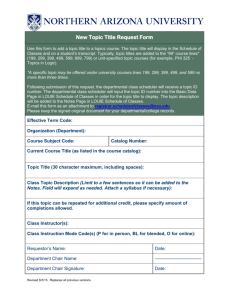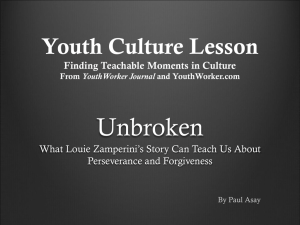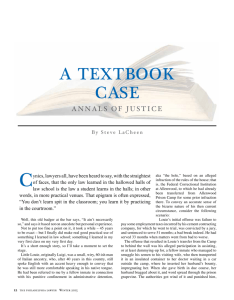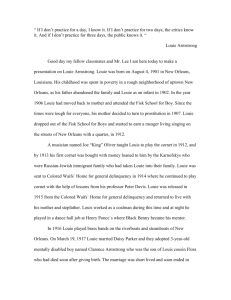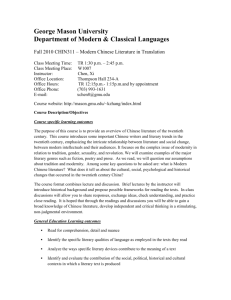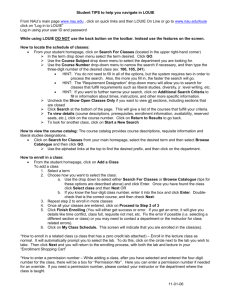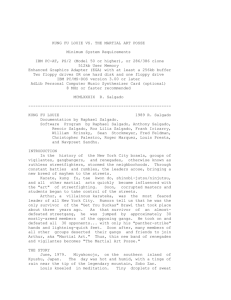Shattering the Myth of the Model MinorityHarvard Fellow on Race
advertisement
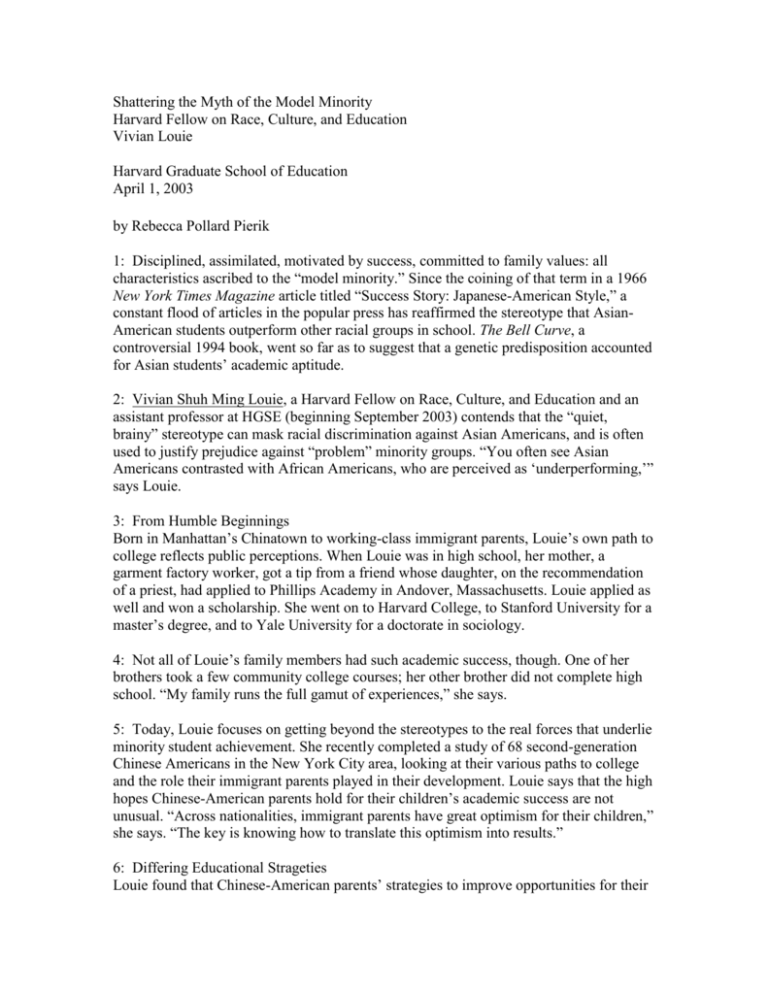
Shattering the Myth of the Model Minority Harvard Fellow on Race, Culture, and Education Vivian Louie Harvard Graduate School of Education April 1, 2003 by Rebecca Pollard Pierik 1: Disciplined, assimilated, motivated by success, committed to family values: all characteristics ascribed to the “model minority.” Since the coining of that term in a 1966 New York Times Magazine article titled “Success Story: Japanese-American Style,” a constant flood of articles in the popular press has reaffirmed the stereotype that AsianAmerican students outperform other racial groups in school. The Bell Curve, a controversial 1994 book, went so far as to suggest that a genetic predisposition accounted for Asian students’ academic aptitude. 2: Vivian Shuh Ming Louie, a Harvard Fellow on Race, Culture, and Education and an assistant professor at HGSE (beginning September 2003) contends that the “quiet, brainy” stereotype can mask racial discrimination against Asian Americans, and is often used to justify prejudice against “problem” minority groups. “You often see Asian Americans contrasted with African Americans, who are perceived as ‘underperforming,’” says Louie. 3: From Humble Beginnings Born in Manhattan’s Chinatown to working-class immigrant parents, Louie’s own path to college reflects public perceptions. When Louie was in high school, her mother, a garment factory worker, got a tip from a friend whose daughter, on the recommendation of a priest, had applied to Phillips Academy in Andover, Massachusetts. Louie applied as well and won a scholarship. She went on to Harvard College, to Stanford University for a master’s degree, and to Yale University for a doctorate in sociology. 4: Not all of Louie’s family members had such academic success, though. One of her brothers took a few community college courses; her other brother did not complete high school. “My family runs the full gamut of experiences,” she says. 5: Today, Louie focuses on getting beyond the stereotypes to the real forces that underlie minority student achievement. She recently completed a study of 68 second-generation Chinese Americans in the New York City area, looking at their various paths to college and the role their immigrant parents played in their development. Louie says that the high hopes Chinese-American parents hold for their children’s academic success are not unusual. “Across nationalities, immigrant parents have great optimism for their children,” she says. “The key is knowing how to translate this optimism into results.” 6: Differing Educational Strageties Louie found that Chinese-American parents’ strategies to improve opportunities for their children differ greatly, depending on the families’ social class, financial means, and access to information about the educational system. Many of the suburban, middle-class Chinese-American parents in her study had the means to buy their children academically enriching afterschool experiences—tutoring, test-preparation courses, or language classes—and to send them to high-performing, often private, schools. 7: The urban working-class parents in the study who could not afford expensive private schools relied on social networking to improve the odds for their children. As Louie’s own story suggests, they shared information to find out about the best public schools in the area or about how to apply for scholarships to private schools. Those with more financial means sent their children to academic preparation schools, commonly known as cram schools, which are run by local Chinese-American businesses. The cram schools prepare children for the next school year and school entrance exams, giving them a leg up into gifted classes and, hopefully, into one of New York City’s specialized public high schools. 8: The two strategies led to different college paths. Chinese-American Children whose parents followed the middle-class, suburban strategy, tended to end up at Columbia University; children from working-class families more often attended a city college. 9: Continuing Research Now, Louie is studying the college paths of Dominican- and Colombian-American students—two groups often stereotyped as “underachieving”—and comparing their experiences to those of Chinese-American students. Although she has just begun her research, Louie believes that some of the social differences between and within the three groups will, again, play out in their educational attainment. She points out that, in contrast to Dominican and Colombian Americans, Chinese Americans have been immigrating to the United States for several decades and have a more differentiated class structure. Resident upper- and middle-class Chinese Americans, she says, could provide supportive networks to new Chinese immigrants that the other two groups cannot access as readily. 10: “Educational achievement is hardly just a function of ethnicity,” says Louie. “As researchers, we must unpack all of the differences between these groups in order to really understand the dynamics that give rise to student achievement.” For More Information For more information about Vivian Shuh Ming Louie and her research, visit her Faculty Profile. About the Article A version of this article originally appeared in the Fall 2002 issue of Ed., the magazine of the Harvard Graduate School of Education. HGSE News, Harvard Graduate School of Education © 2004 President and Fellows of Harvard College. Shattering the Myth of a Model Minority questions based on Ch. 4 and Ch. 5 Who is the author? If you needed more information about her, where could you search? What is the author trying to accomplish? Was she effective? What sort of study does the author describe? What questions did the article raise? What are some weakness of the article? What are some biases the author might have? What are some techniques from mentioned in Ch. 5 that the author uses? general discussion questions If you met someone who was unfamiliar with your culture, what would you want them to know? In the United States, some people consider Asian people to be “the model minority”, why do you think this is? Is there any “model minority” in your home country? If so, why is the group considered to be favorable? What, in your opinion, are the primary factors that determine a child’s success in school or in a career?
